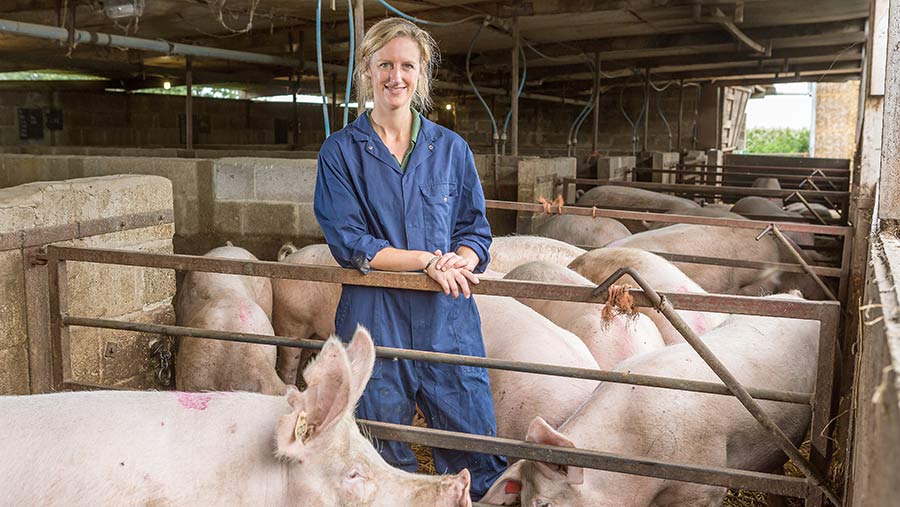Farmer Focus: Landrace goes in bid to simplify herd breeding
 © Richard Stanton
© Richard Stanton Our breeding performance is still under par. Average numbers born alive are being dragged down by gilts, second parities and purebreds, and younger animals have a high number of wasted days due to breeding failure.
Our Landrace herd is only averaging 13.5 born alive with landrace gilts scraping 12.6. Landrace litters a sow a year sits at 2.24 and, of these, parities 1-3 average a pitiful 2.09 when we should be targeting between 2.4 and 2.5.
Our commercial herd is averaging 14.1 born alive, with parities 1-3 achieving under 14 and parities 4-6 all achieving over 15.
We have decided to take a fairly big leap and change our damline genetics to the L-Line (a pure Norsvin Landrace combining finishing efficiency and productivity) and Z-Line (a purebred damline from the Large White for prolificacy, mothering, robustness and management ease) both developed by Topigs Norsvin and supplied by JSR.
See also: 5 zinc oxide alternatives for pigs compared
Our breeding issues are clearly not just genetic. Management plays a big role, but from talking to other farmers, I’m confident it’s the right decision.
In addition to this we are also altering how we structure our herd. We currently operate as a closed herd, producing our own replacement mothers using a pure landrace grandparent herd, which should constitute 10% of the whole herd: about 38 animals in our case.
Over the past couple of years this has crept up to a rather embarrassing 17% because of poor performance meaning we needed a bigger pool for selection.
Looking ahead, we will pick the best 15% of our current Landrace cross Large White parentstock in each batch and serve them to Large White for 12 months before switching to Landrace for 12 months in a ‘criss cross’ system.
The progeny of these crosses will become our parentstock and initially be served to terminal sire until they have proved their worth, at which point they will be served to the damline boar from which they weren’t derived.
This means that we can select the best performing animals, regardless of breed. It might sound complicated, but it’s fairly simple in practice, hopefully leaving us with more robust animals and simplifying the management of our small herd.
Sophie Hope is a Farmer Focus writer from near Cheltenham. Read her biography
